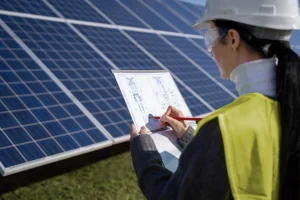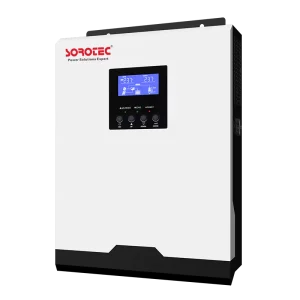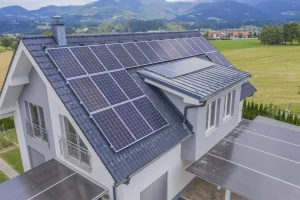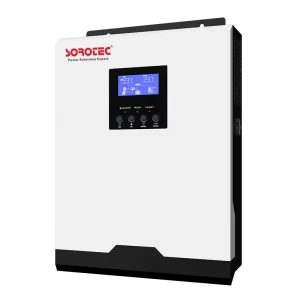Figuring out the perfect solar panel setup for a 300Ah battery bank takes a few steps. You need to know the energy it holds, based on its voltage. Plus, think about real stuff like how much you drain the battery, how sunny your spot is, and how efficient your gear is. This guide helps you size your solar array right, so your battery charges up solid every day.
The sections below break it down, with tips for different voltages and real-world setups.
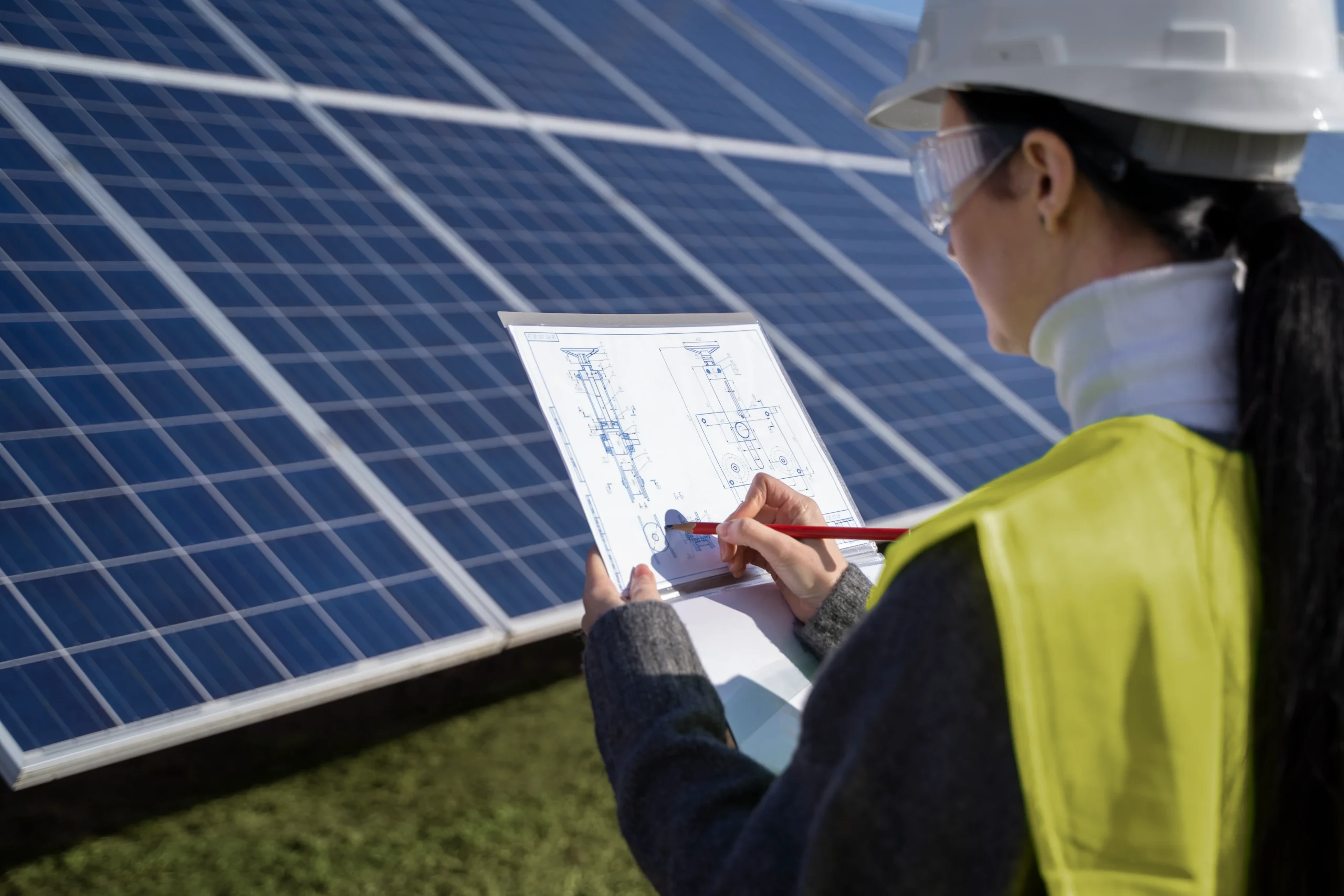
Battery Voltage and Total Energy Storage
To figure out how many solar panels you need for a 300Ah battery, start with its total energy. Battery capacity is in amp-hours (Ah), but for solar, watt-hours (Wh) are better. Multiply the Ah by the system’s voltage:
- For a 12V system: 300Ah × 12V = 3,600Wh or 3.6kWh
- For a 24V system: 300Ah × 24V = 7,200Wh or 7.2kWh
- For a 48V system: 300Ah × 48V = 14,400Wh or 14.4kWh
This shows the max energy your battery can hold in theory.
Daily Energy Consumption and Depth of Discharge Considerations
You can’t use all that energy, though. To keep batteries healthy, don’t drain them fully. Lead-acid batteries should stay above 50% discharge. Lithium ones can go to 80-90%. For a lithium battery at 80% depth of discharge (DoD) on a 12V system, here’s what you get:
3.6kWh × 0.8 = 2.88kWh per day
This is the usable energy your solar panels need to replace daily.
Solar Irradiance and Peak Sun Hours
Now, check how much sun your area gets. Look at peak sun hours—the average time when sunlight hits 1,000 W/m².
For example:
- California gets about 5 to 6 peak sun hours daily.
- Northern Europe might only get 2 to 3 hours.
Panels need good sunlight to work. Without it, they just can’t keep up.
System Efficiency and Power Losses
No system’s perfect. You lose energy from inverter issues (5-10%), wiring, charge controllers, and panel wear. Expect about 20% loss overall.
For a 12V lithium system needing 2.88kWh daily, factor in efficiency. Divide by 0.8 (80% efficiency) to find what panels must make:
2.88kWh ÷ 0.8 = about 3.6kWh per day.
Charge Controller Compatibility and Efficiency
Your charge controller must match the battery voltage and panel output. It’s gotta be efficient too. MPPT controllers beat PWM ones, especially in cool spots or when panel voltage is higher than the battery’s. They can boost charging by up to 30%.
Estimating Daily Energy Needs Based on Battery Usage
If you use most of the usable energy daily, your panels need to replace it before dark.
For example:
- 12V/300Ah lithium battery → about 2.88kWh per day
- 24V/300Ah → roughly 5.76kWh per day
- 48V/300Ah → close to 11.52kWh per day
These are your daily solar power goals.
Determining Total Wattage Needed from Solar Panels
To size your solar array, do this:
Daily kWh needed ÷ Peak Sun Hours = Panel Wattage Needed
For a spot with 5 peak sun hours:
- For a 12V/300Ah lithium bank: 3.6kWh ÷ 5h = about 720W.
- Add extra for losses: 720W × 1.25 = around 900W array.
You might use three 300W panels or five 180W panels, wired to match the voltage.
Matching Panel Output to Charging Timeframes
Think about how fast you need to charge. This matters a ton in off-grid setups with no backup. Charging in one day (5-6 sun hours) needs more wattage than spreading it over two days.
There are three main types of solar panels, each with different power-making abilities.
Comparing Monocrystalline vs. Polycrystalline Panels
Monocrystalline panels are top-notch, with 18-22% efficiency, and work great in low light. Polycrystalline panels hit 15-17%. If space is tight or you want max power from a small spot, go monocrystalline.
Evaluating SOROTEC’s High-Efficiency Solar Modules
Want strong panels that save space and last? Check out SOROTEC’s solar panels. They’re built for homes and businesses, with awesome conversion rates that grab sunlight even on cloudy days or in shade.
SOROTEC uses cutting-edge cell tech in their monocrystalline panels. They perform great in all weather and hold up in hot spots, perfect for tough places.
Recommended SOROTEC Solar Panels for 12V, 24V, and 48V Systems
For different voltage setups, try these:
- 12V/300Ah system: Three SOROTEC 330W monocrystalline modules
- 24V/300Ah system: Six 330W modules, wired as two parallel strings
- 48V/300Ah system: Nine 330W modules, set as three strings of three in series
This setup gives enough juice while keeping voltages safe for MPPT controllers.
Choosing MPPT or PWM Controllers Based on System Design
MPPT controllers are the way to go. They turn extra voltage into usable current, great when panel voltage beats the battery’s. PWM controllers are cheaper but less effective. Use them only if voltages are close and temps are steady.
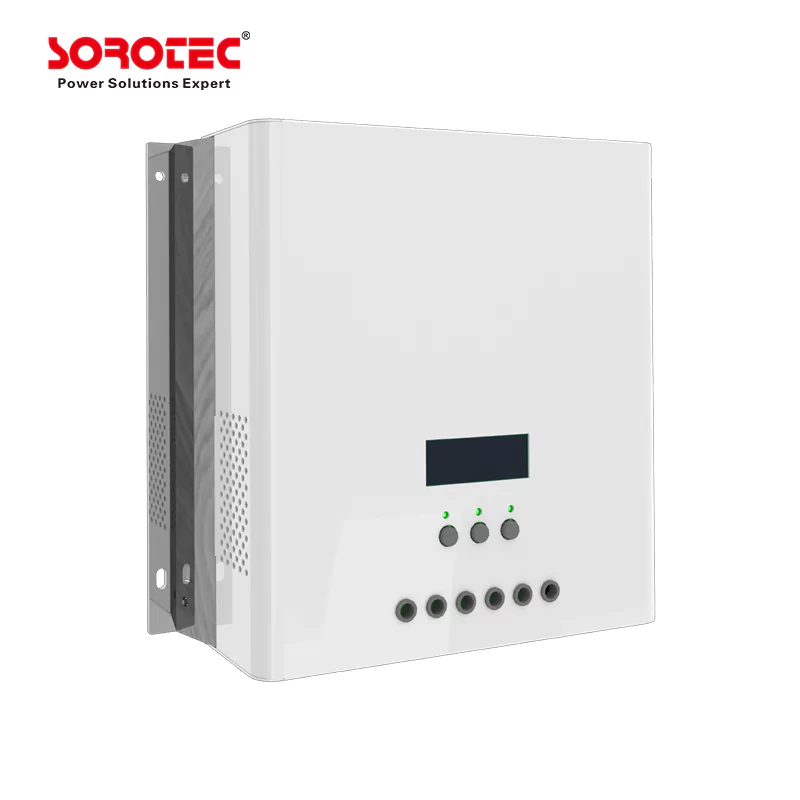
SOROTEC Hybrid Inverter Options for Enhanced System Performance
Pair your panels with a SOROTEC off-grid hybrid inverter. It switches smoothly between solar, grid, or generator power. Plus, they’ve got real-time tracking, awesome for serious setups needing to be solid and growable.
These inverters often have built-in MPPT, cutting extra gear while boosting performance.
Sample Configuration for a 12V 300Ah Battery Bank Using SOROTEC Panels
For places with five sun hours daily, try:
- Three SOROTEC 330W monocrystalline modules
- One MPPT controller rated ≥40A
- One hybrid inverter rated ≥1kVA
This recharges a drained lithium battery during daylight and handles medium AC loads.
Sample Configuration for a 24V 300Ah Battery Bank with MPPT Controller
Here’s a solid plan:
- Six SOROTEC 330W panels
- Two parallel strings of three in series
- One MPPT controller rated ≥60A @24V
This gives extra power on cloudy days and keeps charging steady.
Sample Configuration for a 48V Off-Grid System with SOROTEC Hybrid Inverter
A good setup:
- Nine SOROTEC 330W monocrystalline modules
- Three series strings into one bus
- Hybrid inverter rated ≥5kVA with built-in MPPT (≥80A)
This handles big off-grid needs, like fridges or pumps, with steady charging year-round.
Importance of Proper Panel Orientation and Tilt Angle
To max out your panels, aim them right. Northern hemisphere? Face true south. Southern hemisphere? True north. Tilt at your local latitude, plus or minus 15 degrees, based on the season.
Even top panels flop if shaded or misaligned. A little shade on one cell can tank the whole string’s output.
Maintenance Tips to Maximize Panel Efficiency Over Time
Clean panels regularly—dust can cut efficiency by 25%. Check wires yearly for wear. Look at connectors for rust or damage. With a smart inverter, use its tracking to keep tabs on performance.
Why Choose SOROTEC for Reliable and Scalable Solar Solutions
For off-grid setups, telecom towers, or remote job sites, SOROTEC’s gear is trusty. Their products are built with care and precision.
They offer high-performing PV modules, hybrid inverters with MPPT, and rack-mounted lithium batteries. All are made for easy scaling worldwide. Whether it’s rural power or small grid upgrades, SOROTEC delivers solid options for pros needing great results every time.
FAQ
Q: Can I fully charge my battery bank on cloudy days?
A: Yes, but you’ll need a bigger array since clouds weaken sunlight. SOROTEC’s monocrystalline panels help grab more power in low light.
Q: Is it better to use multiple smaller panels or fewer large ones?
A: Depends on space and budget. Fewer big panels simplify setup, but smaller ones fit better around obstacles like chimneys.
Q: How long will it take my solar array to recharge my batteries?
A: Divide usable kWh by daily panel output based on sun hours. For a 3.6kWh array and a 3.6kWh lithium battery need, you’ll recharge in one sunny day.


